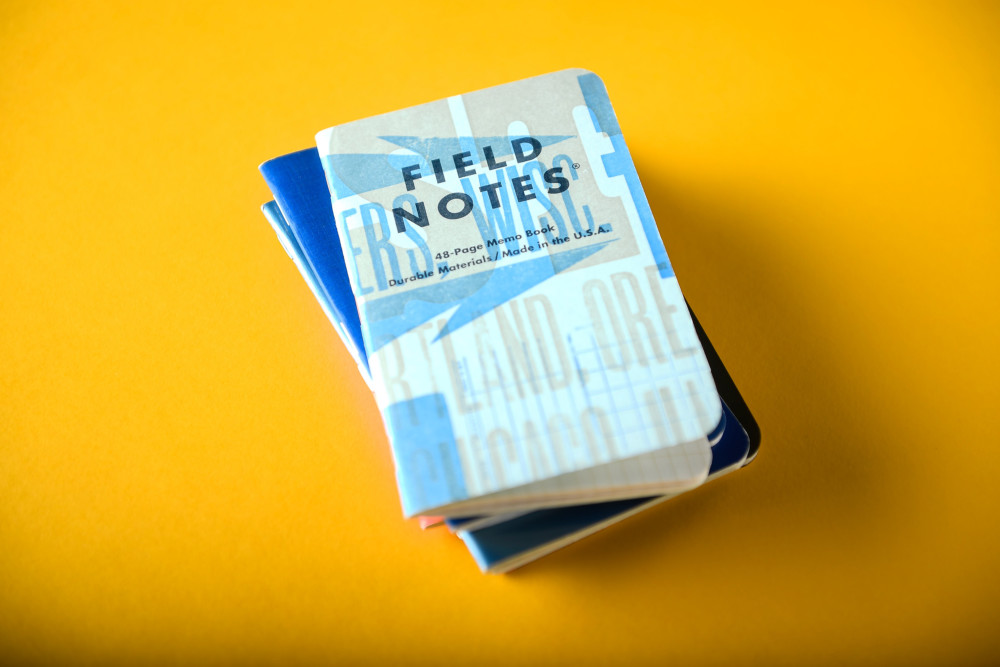By James Lileks
Star Tribune (Minneapolis)
WWR Article Summary (tl;dr) James Lileks of the Star Tribune takes a look at how paper notebooks are making a comeback in this digital age of information.
Star Tribune (Minneapolis)
Search for smartphone “notebook” apps, and you’ll get a hundred choices. Let’s say you choose “Notebook,” just to pick one at random. It lets you draw pictures, enter text, save sound files and sync everything to all your other devices. If you make a shopping list on your phone, you can see it on your smartwatch.
Isn’t that incredible? “Nah,” you say, as you put a Post-it note in a little paper notebook.
“I’m doing just fine.”
Writing by hand is making a comeback. Notebooks are fashionable again.
Why are people opting for something as hopelessly retrograde as paper? Because checking off a box with a pen is more satisfying than tapping a piece of glass. Because you don’t have to worry about your notebook shattering if you drop it. Because paper has soul.
If this sounds like another Young Folks Discover a Classic Tool story, well … yes, it is.
But it’s much broader than that.
The older demographic, you know, the settled, sensible people with decades of wisdom and experience, like notebooks because they’re dependable and simple. You do not have to call a whippersnapper to help you figure out how it works.
The younger demographic, you know, the ones older people think are novelty-addled and utterly dependent on their devices, like notebooks because they’re dependable, simple and … authentic. They have history and tradition behind them, said Jim Coudal, co-founder of Field Notes, a Chicago-based purveyor of notebooks.
“Tractor companies, seed companies, they made these little notebooks and gave them to farmers as promotional items,” he explained. “There are thousands to be found at garage sales, estate sales.”
Most are humble and practically designed. The pocket-size books were intended to be carried everywhere the farmers went and pulled out for the jotting of quick notations.
The Field Notes books are an homage to those little books, but they also take inspiration from Coudal’s grandpa.
“My grandfather was a crazy note taker. Something would occur to him, and he’d tear out a little piece of the newspaper and write it down. ‘Why?’ I said. ‘You’re going to lose it.’ And he said: ‘I’m not writing it down to remember it later. I’m writing it down to remember it now.’
“It’s the idea that the act of physically putting it on paper impresses it in your mind.
Students who take notes on paper tend to retain the information better. If you’re writing it down you’re editing the important parts.”
Notebooks have become so popular that fans can now subscribe to Field Notes. The company produces a new design every three months: a cover that changes color in the sunlight. A gilt-edged salute to old ledgers. One series, called State Fair, had a Minnesota edition.
The inside covers have dense text that rewards the bored. The recent winter edition suggested some “practical applications” for the book: Snow tire mounting reminders. Curling rosters. Bruised tailbone count.
The books also include a detailed account of their technical specs, both a gentle jab to the artisanal obsessives and a recognition of the craft involved in the art of printing: “Cover: Soppi McCoy 100#C Silk with a brute force, 1-color application of DDC Orange soy-based Saphira ink with a soft-touch varnish.”
A FOREIGN AFFAIR
Moleskine is the big player in the notebook business, with annual sales approaching 20 million books per year.
Based on the little black French cahiers, the notebooks have a Paris-in-the-’20s vibe, an image of artists and writers sitting around cafes, jotting down brilliant bon mots or sketching waitresses. “Hemingway might have used one,” we muse to ourselves, except Moleskine wasn’t founded until 1997.
They come with covers that match your self-image: a Keith Haring cover if you’re an edgy New York type, or a collection of Peter Pan quotes for the more whimsical. The company also makes a set with Minions, the purportedly irresistible characters from the “Despicable Me” movies. Oh, Hemingway would have loved those.
Other players include Poppin, notable for durable soft covers; Semikolon, which makes thick books with thick covers and includes a matching pencil (at least, until you lose it), and Marimekko, the famous Finnish fine design company, with all the bold prints you’d expect.
There’s Fabriano, which is both a city and a company in Italy, and Rhodia, which boasts of its cleverly marketed Rhodiactive line.
Not to add to the pressure of making a choice, but you’ll want to pick a notebook that you’ll be proud to keep around for years, no matter how banal its contents. When you’re done filling the pages, it’s an accomplishment, a record, a ration of time made manifest by your marks and scrawls. Fill up your phone with notes, and it’s no heavier. Fill up the books with your jottings, and eventually you’ve got a shoebox full of proof of what you did and what you thought.
Said Coudal: “Having a little personal chapbook or notebook for things that are ultimately practical, milk, eggs, vodka, or a note about this Swedish detective novel I have to read, or a quote … It’s not a diary, but it’s nice to go back and look at the notes and see how I was thinking.”
For extra authenticity, use a fountain pen. Preferably a hand-ground #6A Wotherham nib with jet black Squibb free-flow ink. Sure, it’s just a grocery list. But anyone can check off an item on their phone with their finger. That’s just completing an obligation.
Drawing a line through something to say it is done, that’s an accomplishment.














































































































































































































































































































































































